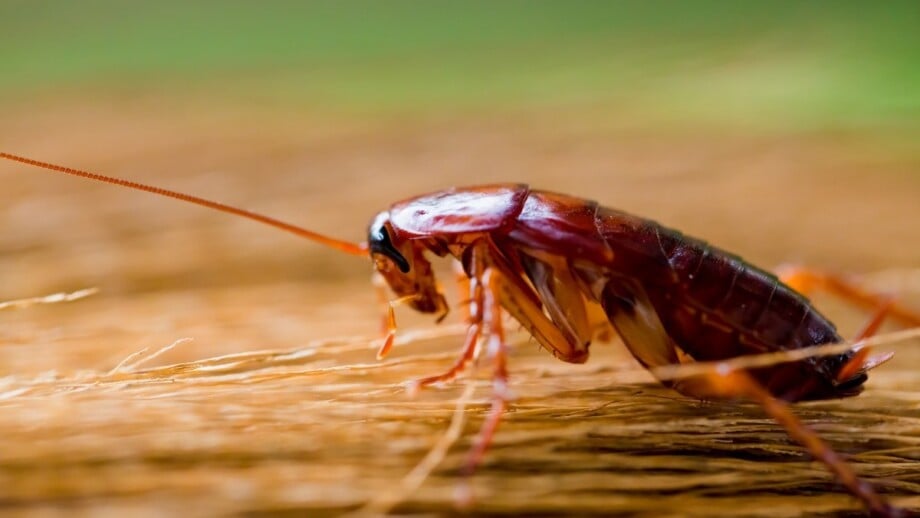If you’ve ever seen a bug scurrying across your kitchen counter or bathroom floor, your first thought might be that it’s a cockroach! But did you know that there are actually several other types of bugs that look like cockroaches?
These bugs can be just as unwelcome in your home, and it’s important to be able to identify them correctly to get rid of them effectively.
In this article, we’ll take a closer look at some of the most common types of bugs that look like roaches, and we’ll provide some tips on how to tell them apart.
Whether you’re dealing with a pest infestation or simply curious about the creepy crawlers in your home, this guide will help you better understand the world of cockroach look-alikes.
Cockroach vs Water Bug
A water bug is a kind of cockroach, right? Even though many people believe this, it’s actually not true.
Water bugs is a term often used to describe both Oriental cockroaches and smoky brown cockroaches. While several different kinds of insects such as water striders, water boatmen, and water scorpions go by the label ‘water bug,’ only one truly deserves the name.
Unlike cockroaches, true water bugs belong to the Belostomatidae family and reside in water. Roaches enjoy moist areas but cannot survive in water. And that’s not the only difference between a roach and a water bug.
Some species of water bugs, like the giant water bug, can get as long as four inches. Meanwhile, the only cockroach species that comes close to the size of a water bug is the American cockroach, which can grow to be 3 inches long. But still, the American cockroach is easily identifiable by the yellow pattern on its head.
The two front legs of a water bug are shaped like pincers to catch food, and they have no antennae at all. They have powerful beaks and have been known to bite people. They are drawn to light rather than hiding in dark places like roaches.
Predatory in nature, water bugs feast on more vulnerable aquatic animals like tadpoles and fish. Cockroaches, on the other hand, will eat just about anything. They are most known for eating garbage and hunting for food scraps.
And lastly, water bugs, unlike roaches, are generally found outside and rarely enter homes.

Cockroach vs Beetle
For many, the beetle is the first insect that comes to mind when we think of bugs that look like roaches.
Although there are over 400,000 kinds of beetles, some of them resemble roaches in size, shape, and color. Certain species of ground beetles including a particular scarab beetle known as the June bug frequently resemble roaches. But how can you tell if it’s a cockroach or a beetle?
For starters, cockroaches have longer legs and antennae than beetles. In addition, their wings, which occur in two pairs like those of beetles, are leathery on top, whereas beetles have hard wings on top.
There are more than 2,000 different kinds of ground beetles. They have small heads, hard wings, and consume garden pests. The black ground beetle is frequently confused with the Oriental cockroach, which has a head that points downward and wings that are shorter.
June bugs, also known as June beetles or May beetles, are rounder than cockroaches, reddish-brown to black in color, and consume plants, primarily tree leaves. Some have eyelashes-like fringed antennae.
They are drawn to light, whereas most cockroach species avoid it. Also, in comparison to the speedy and agile cockroach, June bugs are somewhat clumsy. June bugs may be seen fumbling around on the ground or flying into walls.
While certain beetles bite, cockroach bites are uncommon. Cockroaches generally avoid contact with people altogether. Also, it is rare that you will encounter a beetle in your home, as they prefer to live outside.
You probably already know that cockroaches love to get into homes. Beetles begin life as larvae, some of which are termed grubs, as opposed to cockroaches, which hatch from eggs as small versions of adults.


Cockroach vs Palmetto Bug
What is the difference between a cockroach and a palmetto bug? Well, there actually isn’t one!
Palmetto bugs is the name for both American cockroaches and smoky brown cockroaches. As is the case with the Florida woods cockroach, and occasionally the wood roach as well. The Florida woods cockroach got this name from its preference for hiding behind palmetto leaves.
The name was given to the American cockroach and even the Smoky brown cockroach because back in the day people weren’t too fond of admitting they had a cockroach infestation.
The American cockroach is the most common of the three. It is also the one most often referred to as a palmetto bug. The American cockroach is also called the flying waterbug, the Bombay canary, the southern cockroach, and the flying cockroach.
Although they are roaches, palmetto bugs have characteristics and behaviors distinct from those of other cockroaches found in the United States. Palmetto bugs are most commonly found in basements, sewers, woodpiles, and landscape materials because they enjoy warm, moist conditions.
Palmetto bugs are reddish brown and have a light yellow ring around the shield-like structure that protects their heads.
In appearance, the smokybrown cockroach, which is also often called a palmetto bug, differs slightly from the common American cockroach. Adult smoky brown cockroaches are shiny and have a dark mahogany color. These insects are attracted to tree holes, mulch, and landscaping materials.
Homeowners who turn on their outdoor lights to enter the house may be risking encounters with these insects because of their ability to fly and their attraction to light.
The best way to keep palmetto bugs from hanging out near your house is to get rid of any leftover landscaping materials that might attract them.


Baby Cockroach vs Bed Bugs
Some people mistake bed bugs for cockroach nymphs, especially baby German cockroaches. Both are usually a reddish-brown color, though the German nymph is only that color at a certain stage and both lack wings
Adult bed bugs are often less than 0.2 inches long, and cockroach nymphs, particularly those of the tiny German species, can be comparable in size.
Bed bugs, on the other hand, are often shorter and rounder in shape than cockroaches, which have more oval-shaped bodies. They have shorter antennae and a reddish brown color instead of the tan or golden brown of the German cockroach.
Finding blood on sheets, insect droppings, or small insect eggs are all signs that you have a bedbug infestation. Check out our article on early signs of bed bugs to learn more!


Cockroach vs Termites
Cockroaches and termites have quite different appearances and habits. They are, however, very closely related. Recent research has revealed that termites are actually a sort of cockroach.
Termites have bodies that are rather soft, measuring between 0.15 and 0.6 inches in length, and their antennae are relatively short. There are about 40 different kinds of termites in the United States. They range in color from white to light brown.
Generally speaking, cockroaches are larger, have harder bodies, and have longer antennae. The only time cockroaches turn white is right after they molt but, it’s uncommon to observe them at this delicate stage.
Cockroaches are solitary insects that do not live in colonies. Termites, on the other hand, are social creatures that live in vast colonies led by a queen and king. Also, these two insects behave differently indoors.
Termites love to dwell inside walls because there is enough of space for them to develop their colonies and there is always food available. Termites primarily consume cellulose, which can be found in wood, grass, and leaves.
On the other hand, cockroaches will eat almost anything. They are typically found in kitchens or in close proximity to other food and water sources.


Cockroach vs Palo Verde Beetles
Palo verde beetles are most typically found in the American Southwest. Due to their size and color, these beetles resemble cockroaches, however, palo verde beetles are an entirely distinct species.
They are darker in color, have harder shells, longer bodies, and, of course, can fly! Palo verde beetles lay their eggs under rose bushes, olive trees, and palo verde trees which is how they got their name. The young beetles feed on tree roots after hatching and remain there until they are fully grown.
They thrive outdoors and can’t survive for long periods of time indoors. This type of beetle has virtually little in common with roaches, given all of these characteristics.


Cockroach vs Cricket
Crickets and cockroaches are often confused with each other because they both have six legs and a long body. There is one significant difference, though: if the bug jumps, it’s probably a cricket.
Similar to several cockroach species, crickets range in color from brown to black and have long antennae. Cockroaches have flattened, oval-shaped bodies, whereas crickets have a more cylindrical appearance.
Crickets have wings in front and long legs that help them jump. Cockroaches, on the other hand, have shorter legs and a harder shell to protect their bodies. In terms of infestation, cockroaches tend to favor the indoors, whereas crickets prefer the outside in lawns and gardens.
Similar to beetles, it is unlikely that crickets will invade your home in large numbers.
Crickets are omnivores, which means they eat both plant and animal matter. This is why you’re more likely to find them outside than inside your home. They can still sneak into air vents and other hard-to-reach places, where their chirping can be heard but they remain unseen.
Crickets are only able to survive by eating decaying matter and rotting vegetation, so if you don’t have any of these things in your house, you shouldn’t have to worry about an infestation.
If there are only one or two crickets in the house, it’s not a big deal, but they can be hard to get rid of because they jump so high.
The good news is that crickets are largely harmless and won’t cause any damage to a home, which is something to keep in mind if you find yourself dealing with an infestation. Unfortunately, they are capable of destroying crops, so if this is a problem for you, it may be time to hire a pest control service.


Other Cockroach Guides from Planet Natural:
Baby Cockroach: What They Look Like + How to Get Rid of Them
Palmetto Bug Or Cockroach: Differences & How to Kill Them
Water Bugs: What Are They Exactly and How to Get Rid of Them











